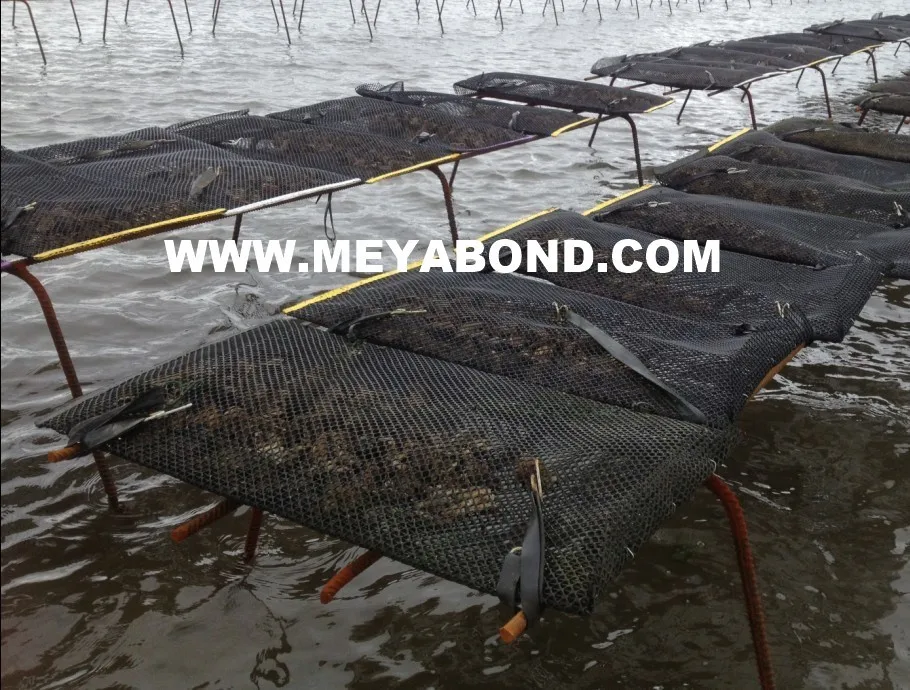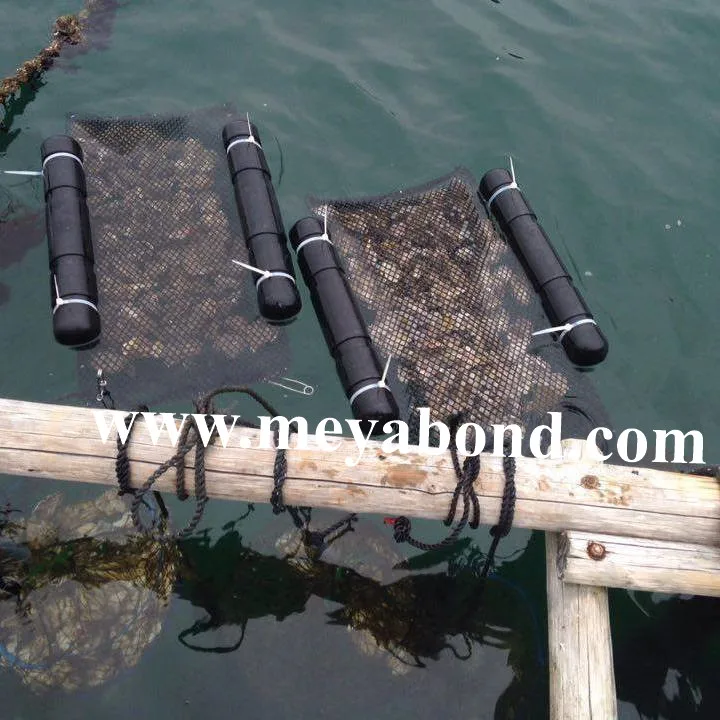

Once the oysters start to spawn they can be picked up and placed into their own separate containers until they have released all of their gametes. It is important to have a large number of oysters, because it is impossible to tell if an oyster is male or female from its outer appearance. When the farmer actually wants to spawn the oysters, they will put a batch of oysters in a tray and rapidly heat and cool the water to induce spawning.


By setting up this separate system, the farmer can mimic the transition from winter to summer quicker than real-time, and essentially convince the oyster that it is time to spawn whenever the farmer needs more larvae. While a recirculating system can be used, a flow-through system is generally better because the natural diversity of phytoplankton is a better diet for conditioning oysters. To ensure ripe oysters for spawning throughout the season, some growers choose to keep mature oysters in a separate system where the farmer can manipulate the temperature and food within the system. All of the oysters in an area will spawn at the same time to increase the chances that their gametes meet and fertile larvae are produced. Oysters in the wild are only "ripe" with gametes for a short window. Broodstock are the "parent" oysters that will provide gametes for larvae. The first step to cultivating oysters is conditioning broodstock. When farmed, the temperature and salinity of the water are controlled (or at least monitored), so as to induce spawning and fertilization, as well as to speed the rate of maturation – which can take several years. Oysters naturally grow in estuarine bodies of brackish water. The oysters would get shipped to Italy, where Roman Emperors would pay for them by their weight in gold.Ĭommonly farmed food oysters include the Eastern oyster Crassostrea virginica, the Pacific oyster Crassostrea gigas, Belon oyster Ostrea edulis, the Sydney rock oyster Saccostrea glomerata, and the Southern mud oyster Ostrea angasi. The area’s “kentish flats” have been used since the Romans started. Another place in England that is famous for its oyster fishing is Whistable. A couple of years later the company closed its doors and all the assets were sold by 1881, closing the oyster farming in the Thames Estuary area in England. This act prevented the sale of dredged oysters from the months of June through August, and freshwater pond oyster sales from between May and August. This caused the government of England to make the 1877 Act to solve the problem.

In the 1870s the oyster trade suffered from overfishing and sent the industry into a decline. Then in July 25, 1864, The Herne Bay Hampton and Recuiver Oyster Fishery Company moved into the area to start oyster farming. They would export the oysters back to Rome and throughout the Roman Empire. The Ancient Romans started farming the Thames Estuary in Hampton-On-Sea, or Kent, England from the 1st Century to approximately the 4th Century. Some time later the wall was covered with spat coming spontaneously from the sea which gave 2000 baby oysters per square metre. After obtaining the rights to a part of the coast he built a wall to make a reservoir and to break the strength of the current. An important step to the modern oyster farming was the oyster farm built by Hyacinthe Boeuf in the Ile de Ré. In 1852 Monsieur de Bon started to re-seed the oyster beds by collecting the oyster spawn using makeshift catchers. He did this by cultivating the mollusk with a system that could control the water levels. The Roman engineer Sergius Orata is known for his innovative ways of breeding and commercializing oysters. In fact, the Romans were the very first to cultivate Oysters. With the Barbarian invasions the oyster farming in the Mediterranean and the Atlantic came to an end. Oyster farming was practiced by the ancient Romans as early as the 1st century BC on the Italian peninsula. Flat bottomed oyster-boat with oyster-bags in Chaillevette, France


 0 kommentar(er)
0 kommentar(er)
